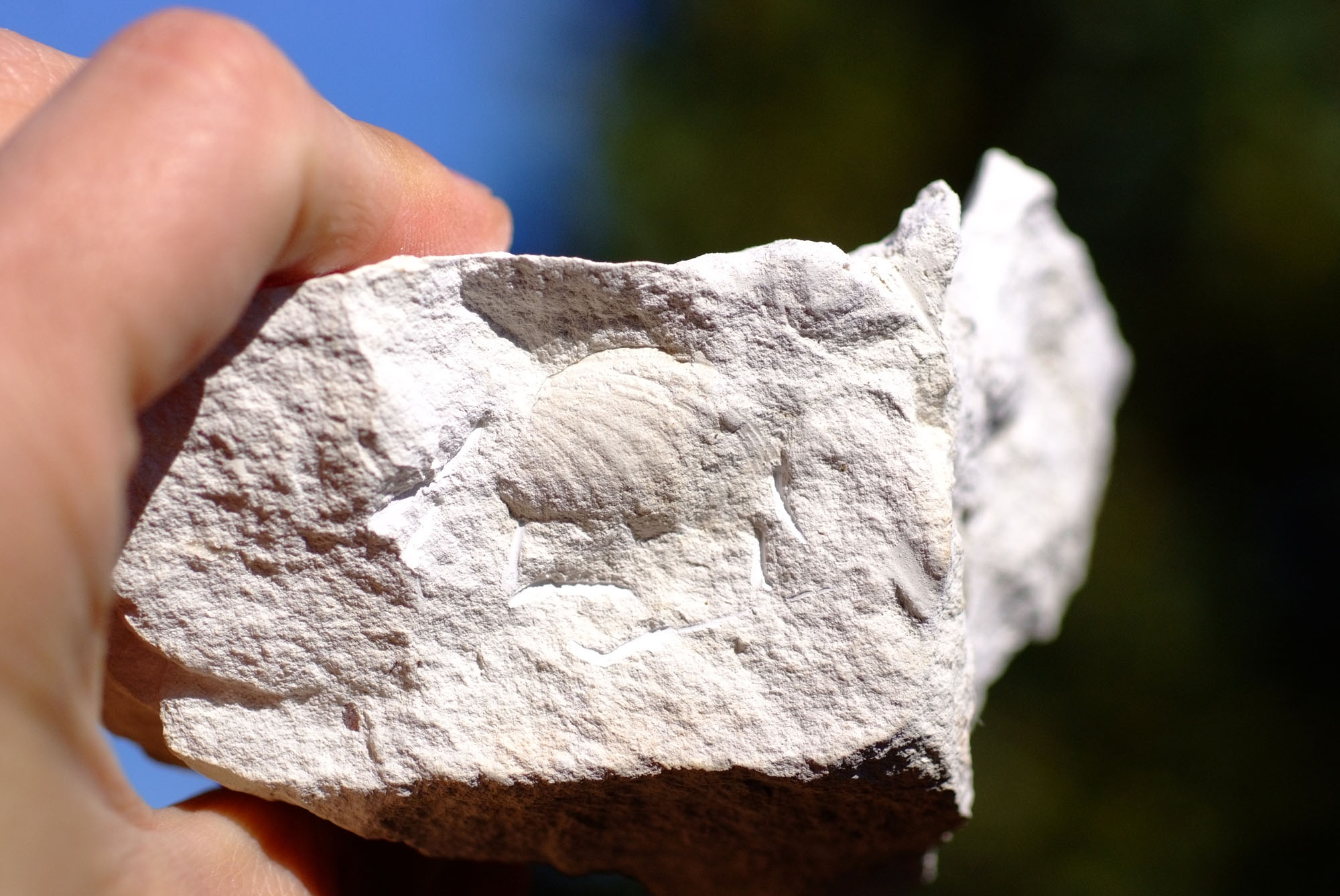Peene Quarry is a country park just north of the Channel Tunnel. It has limited parking, but is publically accessible. Although badly overgrown, the site does have one good section with plenty of Upper Cretaceous rocks from the Holywell Nodular Chalk Formation to look through. One particularly accessible quarry is featured in this guide, which cuts through the New Pit Formation. Brachiopods and bivalves are the most common fossils here.
DIRECTIONS
♦ From the M20, take Junction 12 heading north (left at the roundabout, if heading towards Folkestone from the west).
♦ Follow the road around the Channel Tunnel Terminal, underneath a railway bridge and a further two road bridges all in close succession. Immediately after the third bridge is a minor road on the right heading north towards Newington.
♦ Take this road and following through the village of Peene, where you will come to a hairpin bend. Continue up ‘Hill Lane’ towards the country park.
♦ At the junction, turn left and you will then find parking, which is along the road and before the start of the Country Park footpath. This is marked by an information sign. Follow the trackway until you reach a large open area. Here, the best exposures of chalk can be found along the hillside to the left of the open area.
♦ Ref: 51.10115°N, 1.12640°E
PROFILE INFO
FIND FREQUENCY: ♦♦♦ –
The old quarry here has a good supply of boulders, scree and bedrock from the Holywell Nodular Chalk Formation. Here, the beds are not as fossiliferous as at other localities. However, you are likely to find bivalves and perhaps the occasional brachiopod, but echinoids and other chalk fossils are rare.
CHILDREN: ♦♦♦ – This location is suitable for children, although please be aware that it is a fairly long walk, especially for little legs. Please also be aware that where the rock section is located – the field is used for cattle and there may be cows present. This means the field can be very muddy and cattle can be dangerous.
ACCESS: ♦♦♦ – The site is easy to find, with a fairly short walk and limited parking nearby. This particular location is not typical of most country parks in the UK. There are no toilets, picnic benches or other amenities, and if it wasn’t for a small signpost, you would never know it is open to the public.
TYPE: – Fossils are found in boulders and scree. Just one good area of chalk remains at this site, which yields some fossils, but is not as productive as other localities with similar aged chalk. The rest of the old quarry is badly overgrown.
FOSSIL HUNTING
Collecting chalk fossils from quarries is never as productive as coastal locations, where wave cut platforms or fresh cliff falls provide much better chances of finding anything. However, exploring inland quarries is not tide dependant and disused quarries such as this are generally safer than coastal sites. Don’t expect to find many fossils though.
Follow the path until it reaches a large open area. Here you will see plenty of large boulders and scree to look through. Fossils such as bivalves and brachiopods can be found, although are not very common. However, it is possible to find echinoids and other chalk fossils if you are lucky.
Before leaving the site, you should walk a little way past the open area up the embankment to the top of the quarry. Here, you can admire the view of the Channel Tunnel Terminals, with queues of lorries and the many railway lines.

GEOLOGY
The site has one good section with plenty of Upper Cretaceous rocks from the Holywell Nodular Chalk Formation. which is Turonian in age. This rock is a hard nodular chalk with thin flaser marls and significant proportions of shell debris in part. It is also exposed in Sussex, at Eastbourne and Beachy Head.

SAFETY
This site is fairly safe. However, please keep away from the edge of the path where sections have a fairly steep drop. Also, be aware of any cattle in the field.
EQUIPMENT
You will need a hammer and chisel to split the boulders. Most fossils will be found this way, as any loose fossils tend to become badly weathered and degraded. Safety goggles are also recommended when using hammers.
ACCESS RIGHTS
This site is a site of special scientific interest (SSSI). This means you can visit the site, but hammering the bedrock is not permitted. For full information about the reasons for the status of the site and restrictions, download the PDF from Natural England.
It is important to follow our ‘Code of Conduct’ when collecting fossils or visiting any site. Please also read our ‘Terms and Conditions‘
LINKS
♦ Buy Fossils, Crystals, Tools
♦ Location Discussions
♦ Deposits Magazine
♦ Join Fossil Hunts
♦ UK Fossils Network


















